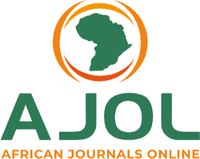EVALUATION OF OPTIMUM CONDITIONS FOR THE REMOVAL OF SELECTED HEAVY METALS IN TANNERY EFFLUENTS FROM NILEST USING CARBONISED SWEET DATTOCK SHELLS
DOI:
https://doi.org/10.56892/bima.v3i01.128Keywords:
Heavy metals, Effluent, Sweet dattock shell, RSM.Abstract
The optimum conditions for the adsorption of Ni, Cd, Cr and Pb ions onto modified sweet
dattock shells (Sd) from tannery effluents were investigated and analysed. Three adsorption
variables (pH, adsorbent dosage and contact time) were studied using central composite design
(CCD) a subset of response surface methodology (RSM). The cheap, nontoxic and locally
available adsorbent (sweet dattock shells) was subjected to carbonisation and subsequently the
digestion of the sample was done using a standard method. In RSM study, the individual and
interactive effects of the three critical variables including pH of the solution, Sd dosage and
contact time on the adsorption capacity were optimised. Quadratic models were developed for
both metals percentage removal. The prime adsorption conditions obtained were pH 4, Sd
dosage of 0.8g at 20 mins with desirability of 0.925. These results were statistically significant
and this shows that the conditions obtained could be used for treatment of tannery effluents.





